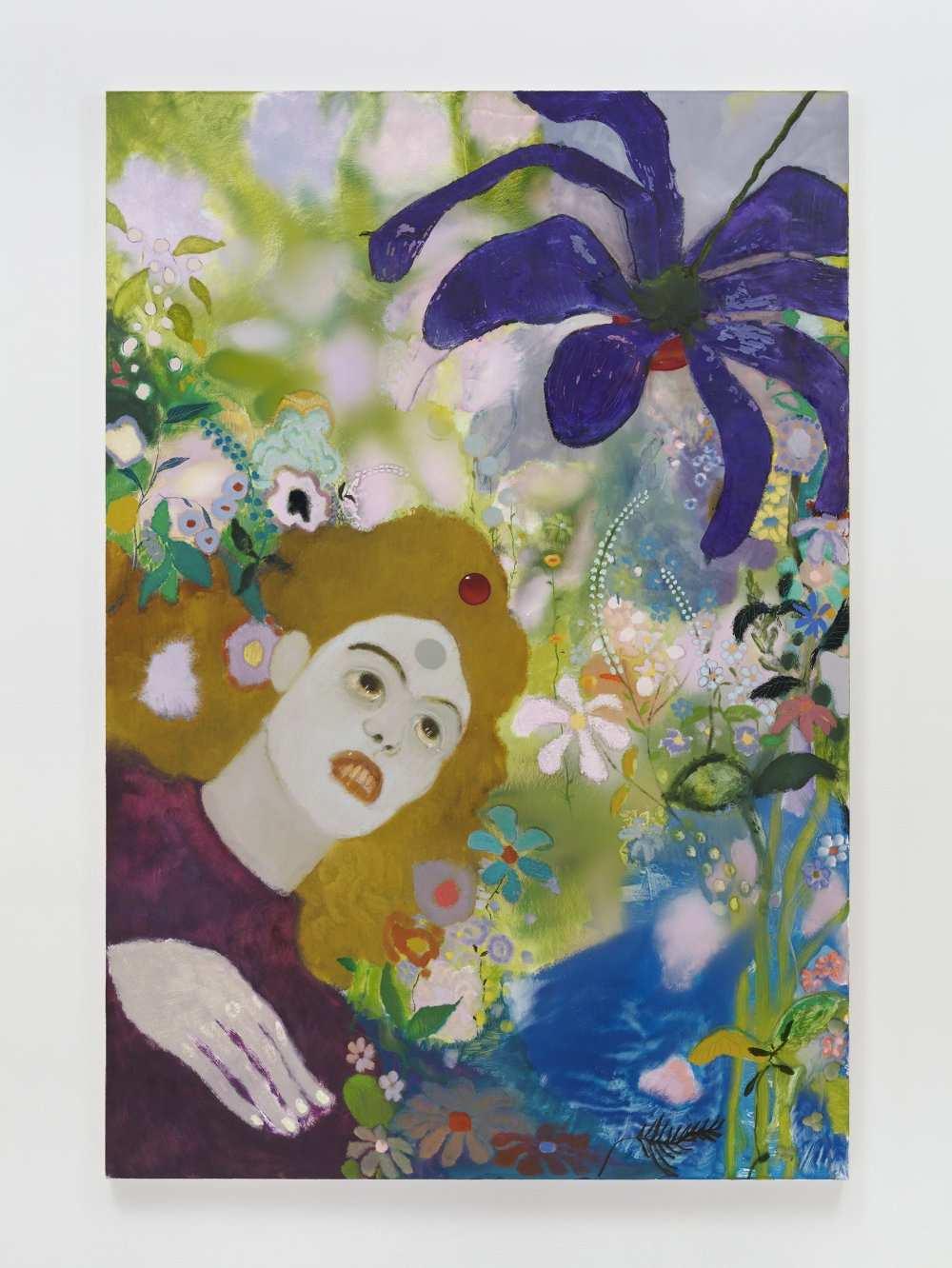Besiege

In a Shakespearean play, the juice of the flower “love in idleness” is the central ingredient to a powerful aphrodisiac. A single drop on the eyelid of the sleeper is well enough to make them worship madly the first thing that meets their sight upon awakening.
The celestial purple resides in the looming dimension of presence . Desire has been stoked by the illusion of youth and immortality.
claritas (luminosity)
agilitas (travel at the speed of thought) subtilitas (the ability to pass through physical matter) impassibilities (strength and freedom from suffering)
Her gaze on the onieric red jewel hovering above her forehead has intensified, there is something staggering in its form. The air presents an unparalleled sense of energy that comes open inside her. The dominance of the mind, self and ego recedes. Hidden meanings can be unraveled here.
As her fingertips glide toward the azure permeating the edges of the walls of her unconsciousness, a heightened corporeal awareness enables her to entirely lean into the pace and rhythm of the resurrected body.
I cannot shake the image of Kantarovsky’s “The House of the Spider”, it resembles an inscrutable, sexual and fantastical dream that uncover the forbidden thoughts one has repressed into the unconscious. He tends to take a more oblique approach to his material, they are aptly structured with visual metaphor to translate his satirical lens for the grim realities and unconscionable cruelty. They don’t depict anything, they project something.
It makes me think of H.D.’s Palimpsest, which was published in 1926, the protagonist experiences an internal chasm between her identity as an artist and a woman navigating her relationship with men. It speaks glumly to the way her vast intelligence and insatiable curiosity lead to men fundamentally rejecting her femininity and sexual desirabiity.
Carrying the magnitute of the oppositions of existence: life and death, victory and failure, tenderness and brutality, it is perhaps less daunting to enter a state of, what H.D. describes as “a cacoon-blur of not-thinking”. A departure from violence, terror and the sublime.
In his 2014 book, “varieties of anomalous experience”, the psychologist Etzel Cardeña engages directly with dissociative fugue — the severance of two identities, the bifurcation of the far too seperated worlds of waking and sleeping. There seems to be an implication there that the narrative around consistent and stable personalities is a falsehood.
“when a person falls between the cracks of the house built by contemporary mainstream psychology.”
Jordan Kisner’s “Thin Places” displays an honest meditation on modern-day understandings of the in-between states of being. It explores the two different substances one reality is consists of — physical and spiritual. In the titular essay of the book, it further investigates the historical and intellectual context of “Obsession”. When monastic psychology was in the ascendant in the third century, obsession was recognised as demonically-induced behaviour and spirit possession. It was a salient cultural transformation to have developed a language to understand obsession and other insanities.
The interlocking domains of religion, psychiatry and language bring up questions with regard to our interpretation of “Mental Illness”, “Lunacy” and “Madness”. The prominent model these days seems to stress the neat and clean demarcation between biological and spiritual, when the mind takes form as a marauding invading force, pounding, shattering and breaching the cognitive processes of the brain, we are more susceptible to chalk it up to mere neurochemical abnormality and no further possibility remains.
Thinking of the mind as a foreign entity that can’t be deciphered seems to be a denial to human's infinite capacity of developing character traits so much as personality pathlogies. But by establishing firm boundaries between all those categories of being (neurotic/ psychotic, obsession/delusion, admirable/deplorable), we demand absolutism in a world of nuance.
